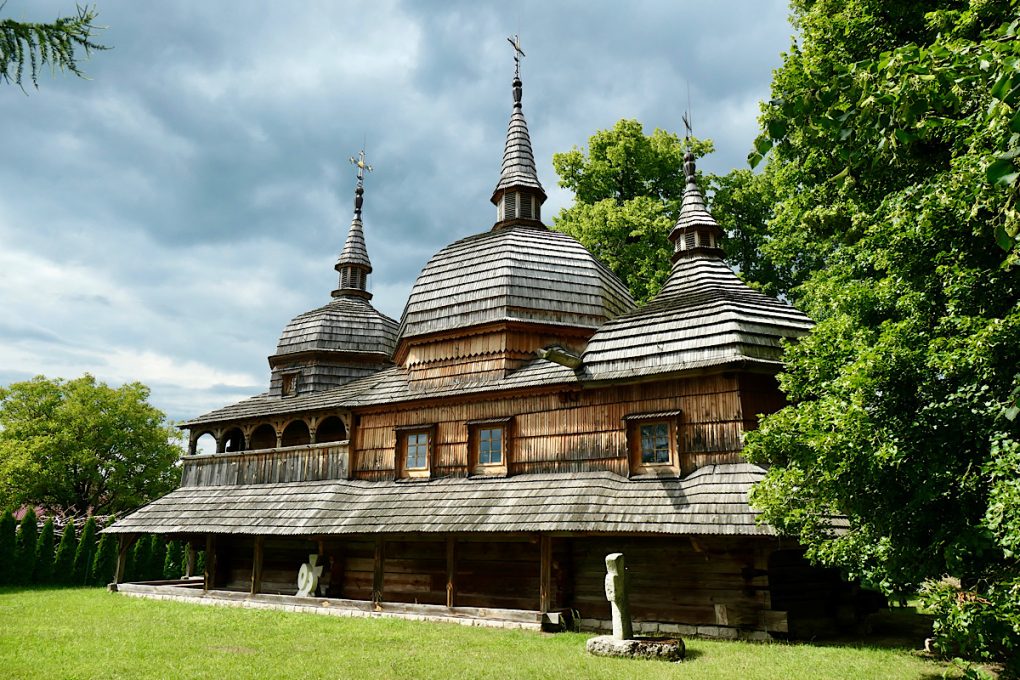
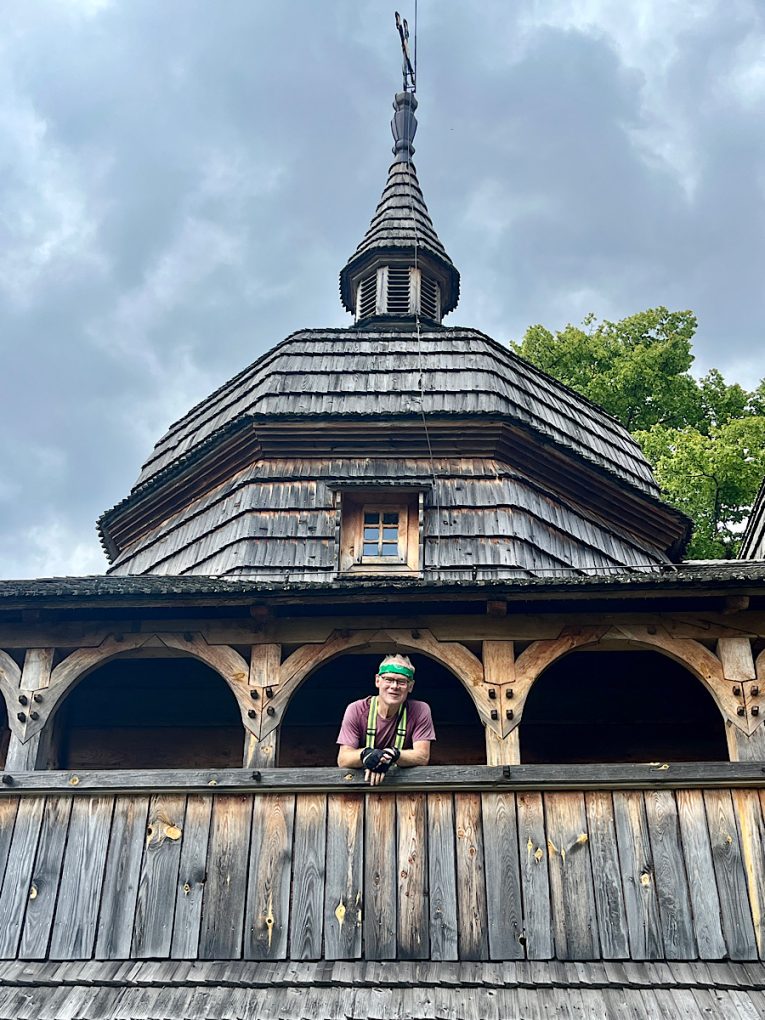
We visited UNESCO listed Saint Paraskevi Church in Radiz, the oldest wooden Church in Poland. It was build in the Gothic carpenter tradition at the end of the 16th century.
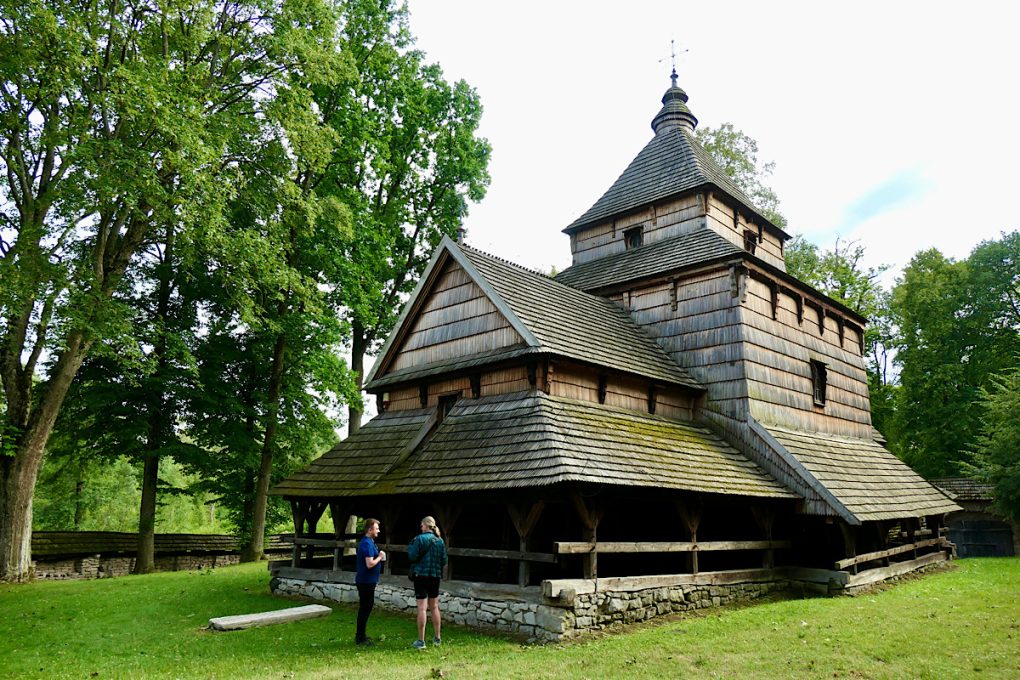
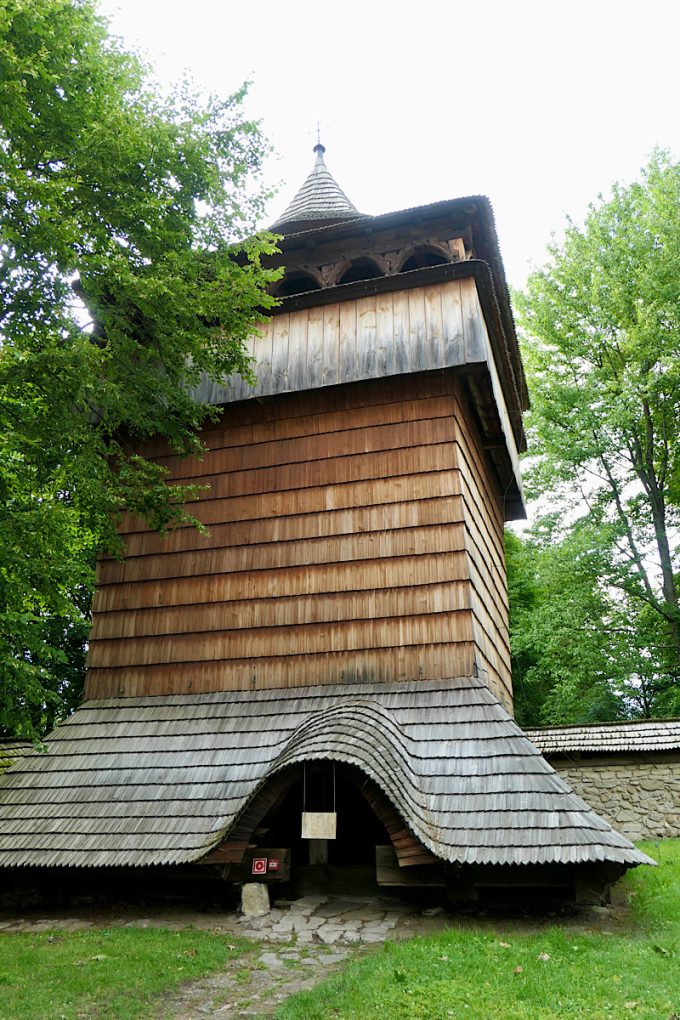
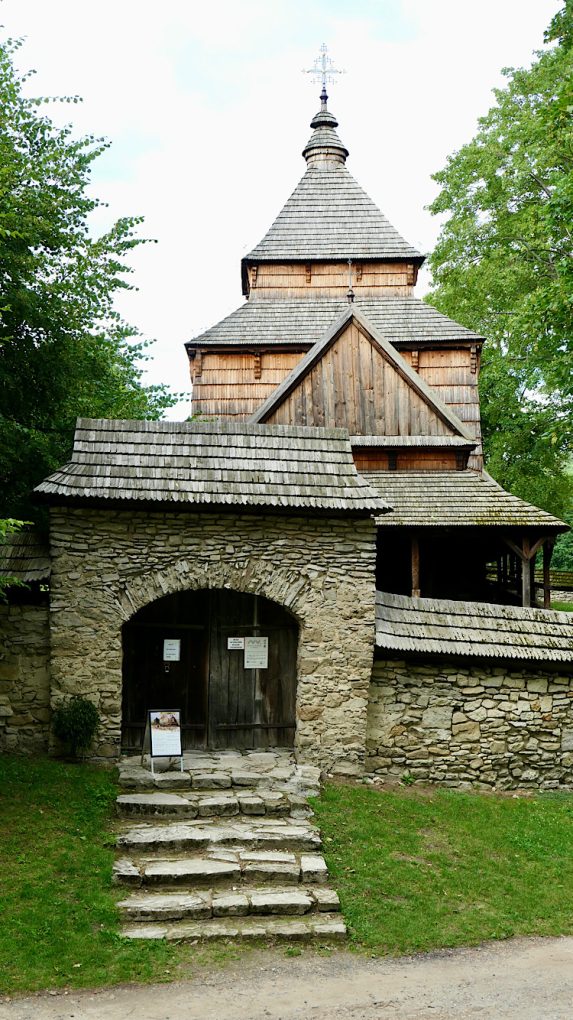
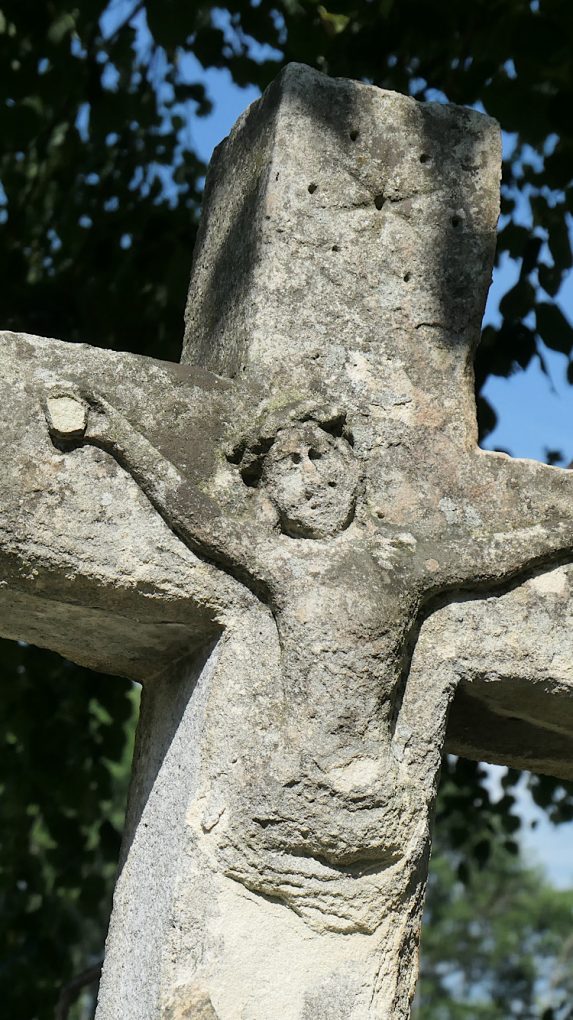
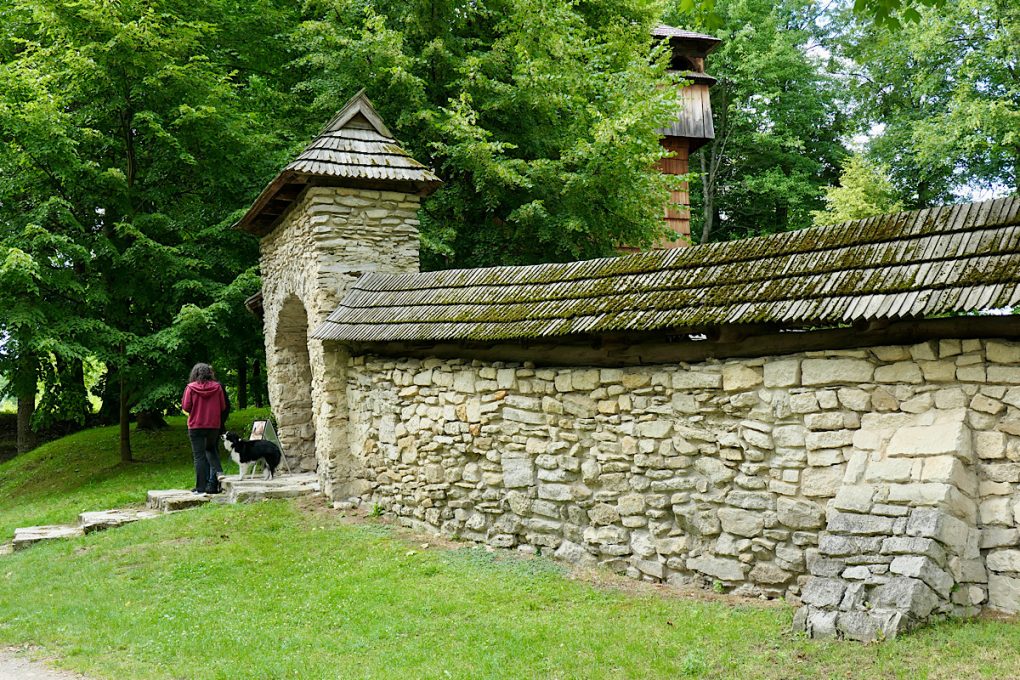


July 11, 2025 – Zamość to Horyniec Zdrój – 98 kms – Pensijonat Hogi
July 12, 2025 – Horyniec Zdrój to Jaroslaw – 66 kms – Dwór Hetman
July 13, 2025 – Jaroslaw to Dubiecko – 56 kms – Zakole Sanu
July 14, 2025 – Dubiecko to Sanok- 55 kms – Apartment City Sanok
Ruth: We have now cycled into southeastern Poland close to the Ukrainian border. The landscape is hilly and dotted with hamlets and the occasional wooden church. Some of these are included in the UNESCO designation for the Wooden Churches of Poland and some are not, but all of them are well worth a stop.
A couple of nights ago we met the members of a Dutch band called the Analogues. They were also on bikes, riding from the Netherlands to the Ukraine raising money for a charity called War Child. They performed a number of concerts enroute and their last one was scheduled two days later in Lviv, Ukraine. They are a Beatles band, and very serious about the Fab Four.
We wished them well as we set off the next morning. They were going to cross into Ukraine at a border crossing about 20 kms away, and ride the remaining distance to Lviv that day. Gord read later that Lviv was one of the cities attacked by drones and missiles the night that we met the band. We were glad to read that they canceled their concert and ended their tour in Poland.
Today we followed the San River as it snaked through the wooded hills. We stayed last night on the more remote side of the river. Before the single lane bridge was built, only four years ago, the river near Sielnica could only crossed on one of several pedestrian suspension bridges or on small cable ferries that could only run when there was enough water in the relatively shallow river. There is still virtually no cell reception in the valley we stayed in and the community seemed frozen in a different time. Our host explained that during the Second World War the river was the boundary between the Nazis and the Soviets, presumably under the secret Ribbentrop-Molotov Agreement. His family lived on the Soviet side, but his Grandmother was on the Nazi side. She was sent to Germany to do slave labour until she married and was then allowed to return to Poland. The two sides of the river have continued to be culturally distinct, with Orthodox and later Greek Catholic Churches on one side and Roman Catholic on the other.
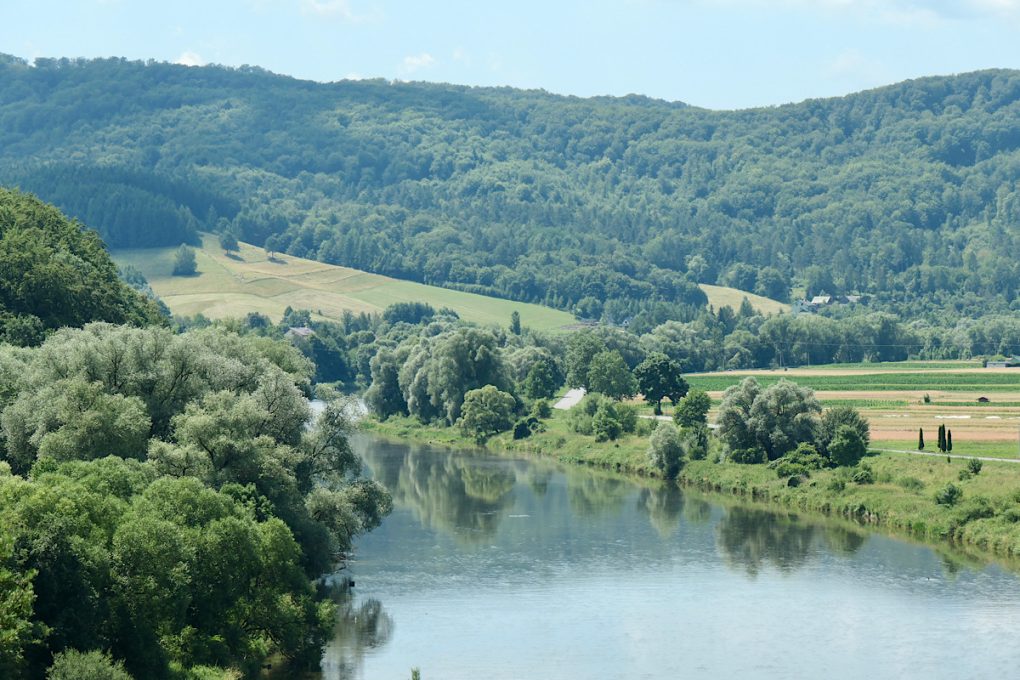

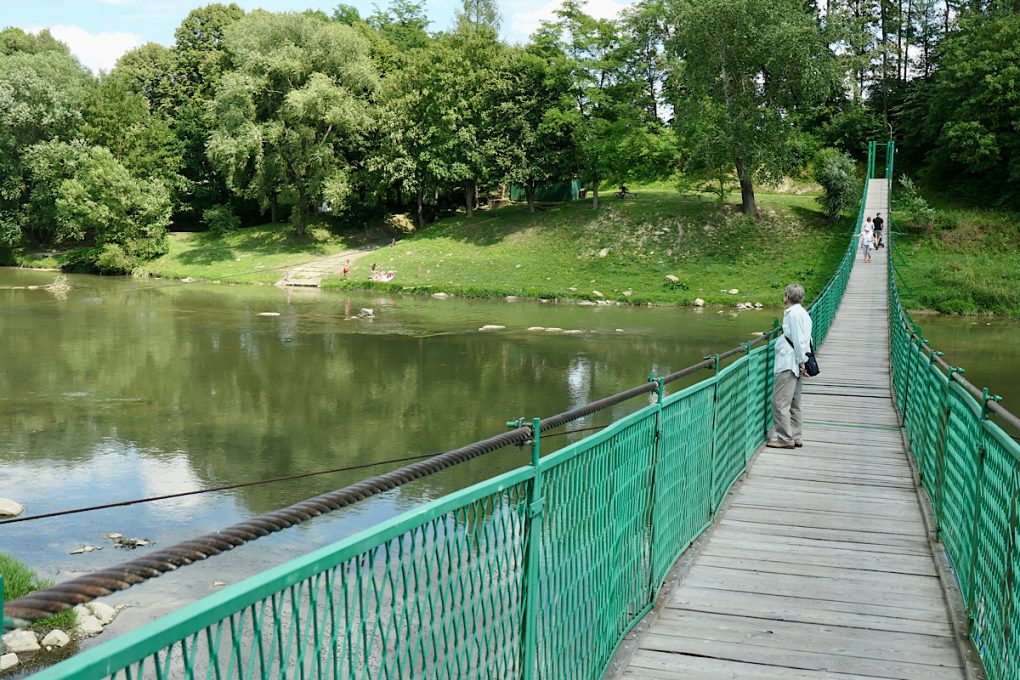
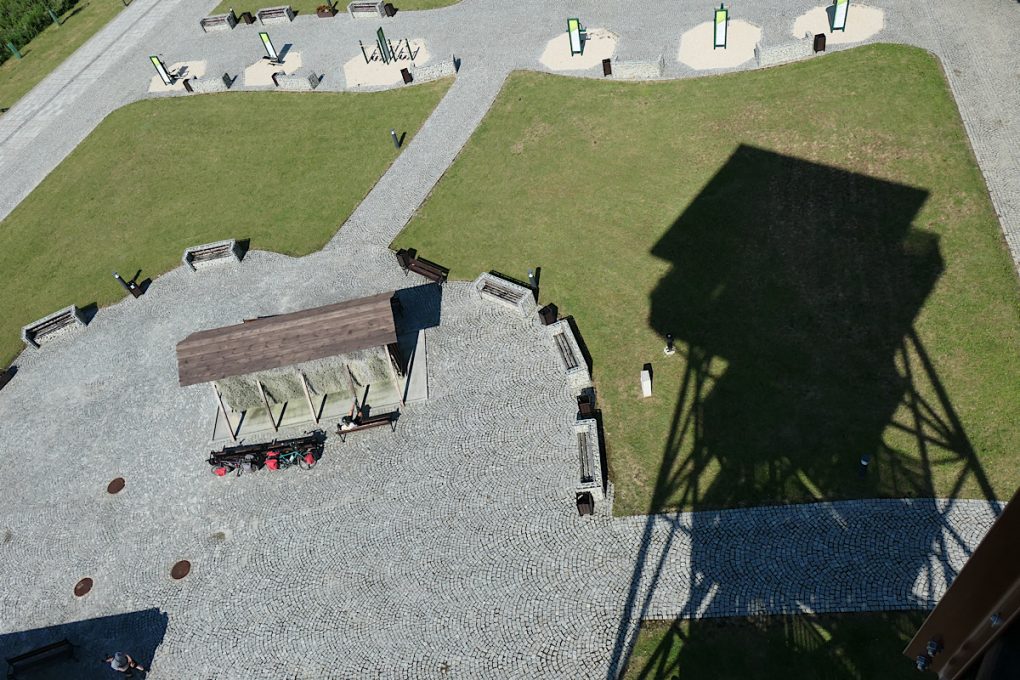
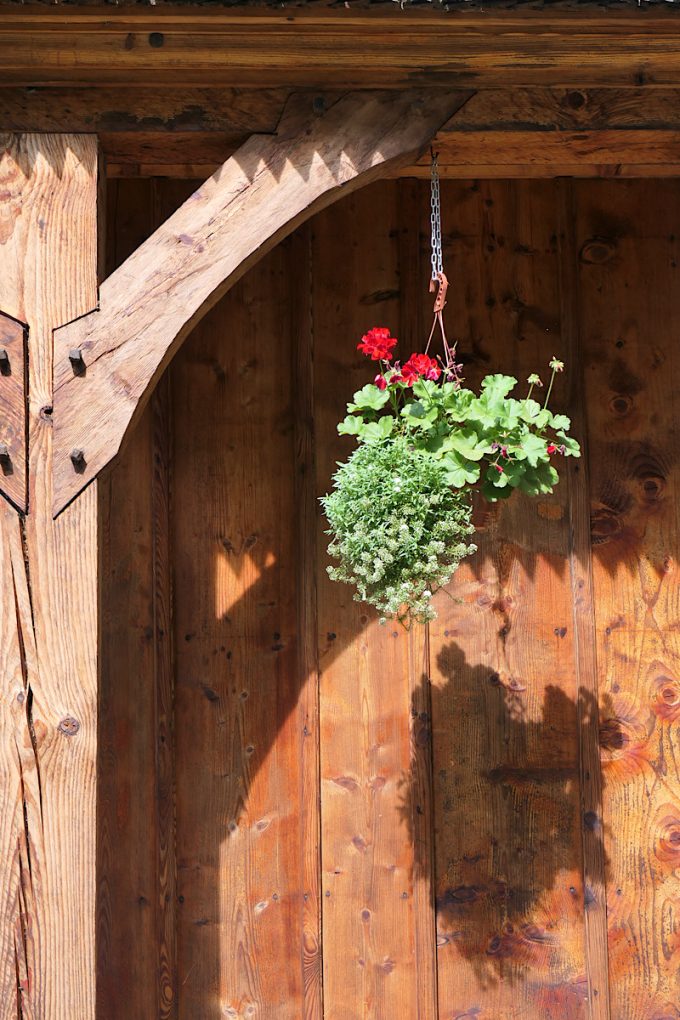
We parked our bikes at the village of Ulucz on the banks of the San River and climbed a steep track up to the Church of the Assumption. The church was previously a monastery and you could still see the foundations of the stone walls.
This is a remarkably beautiful area and we wish that we had more time to explore it. Unfortunately, we only have time for five more days of cycling before we fly home. We will be trying to see a few more of these wooden churches before we finish our journey at Krakow.
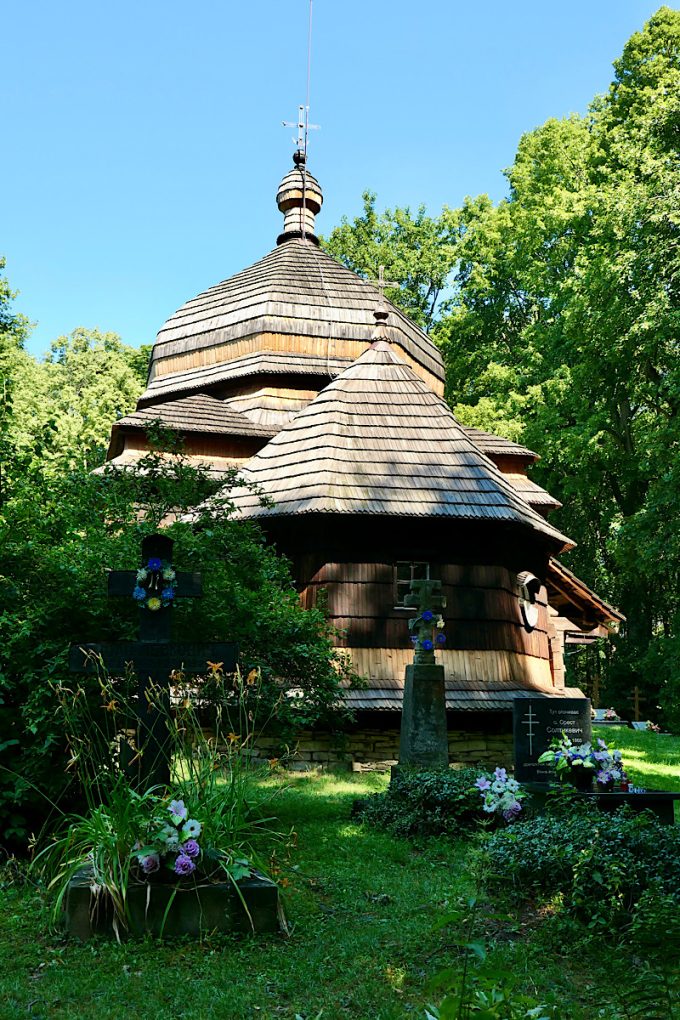
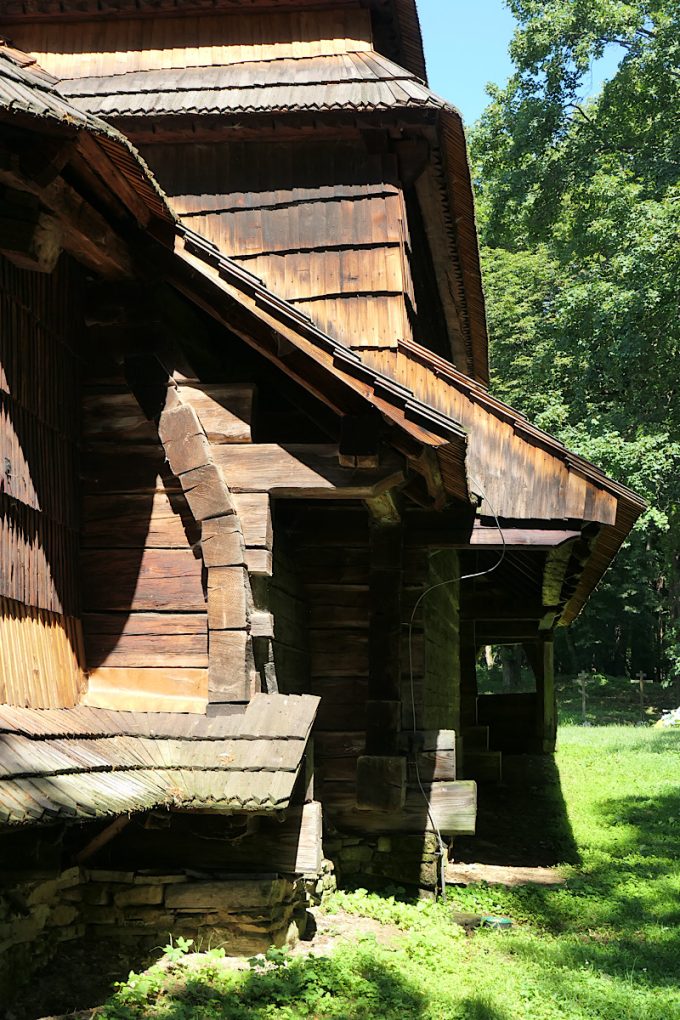
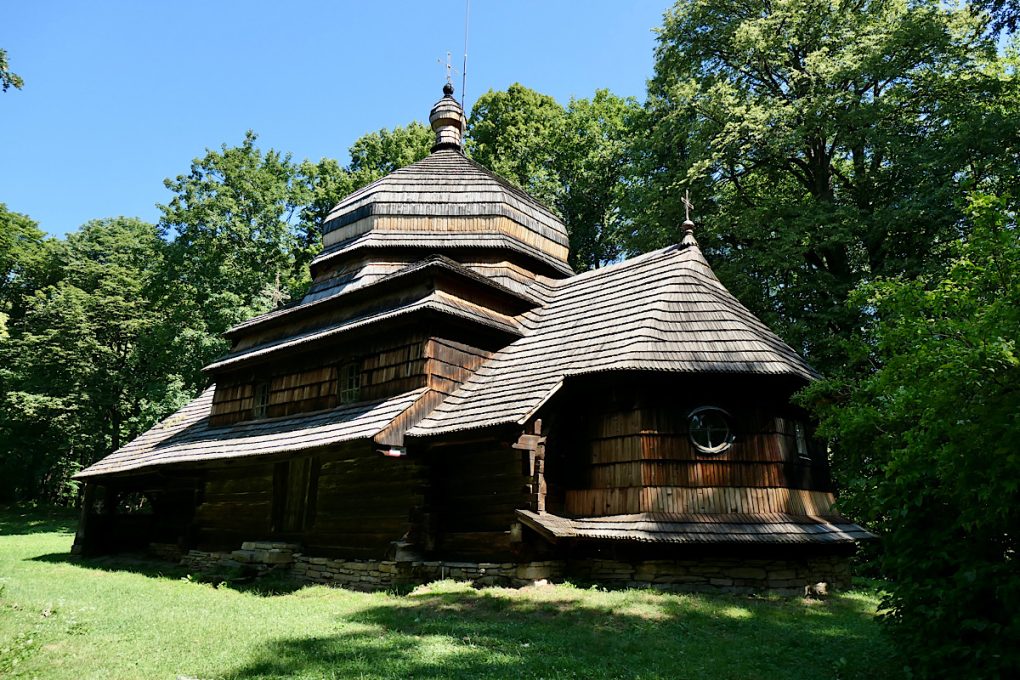
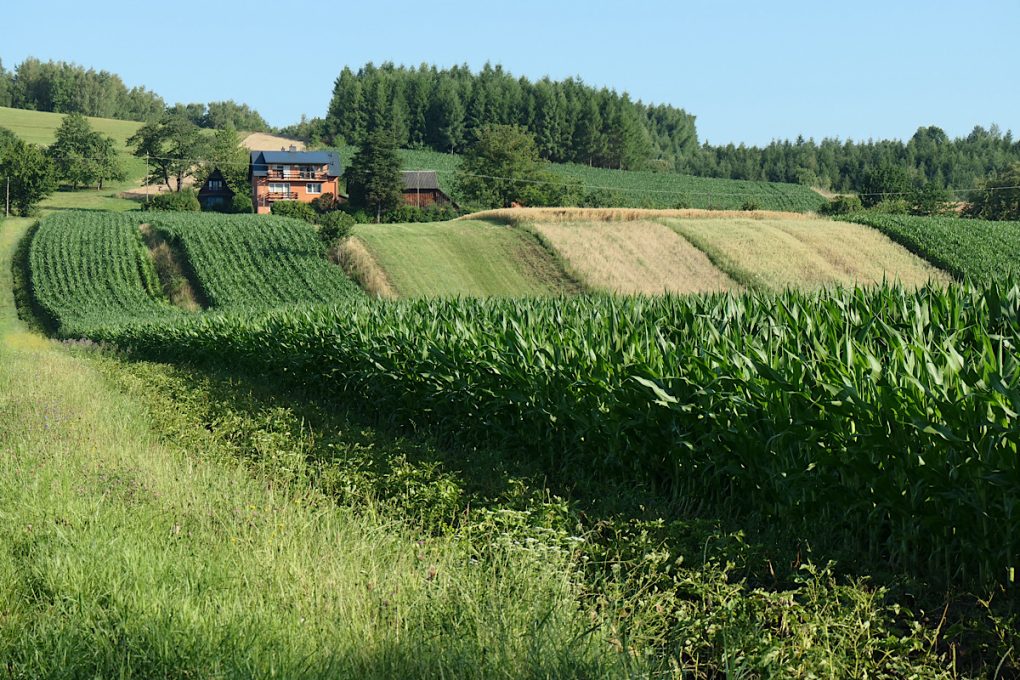
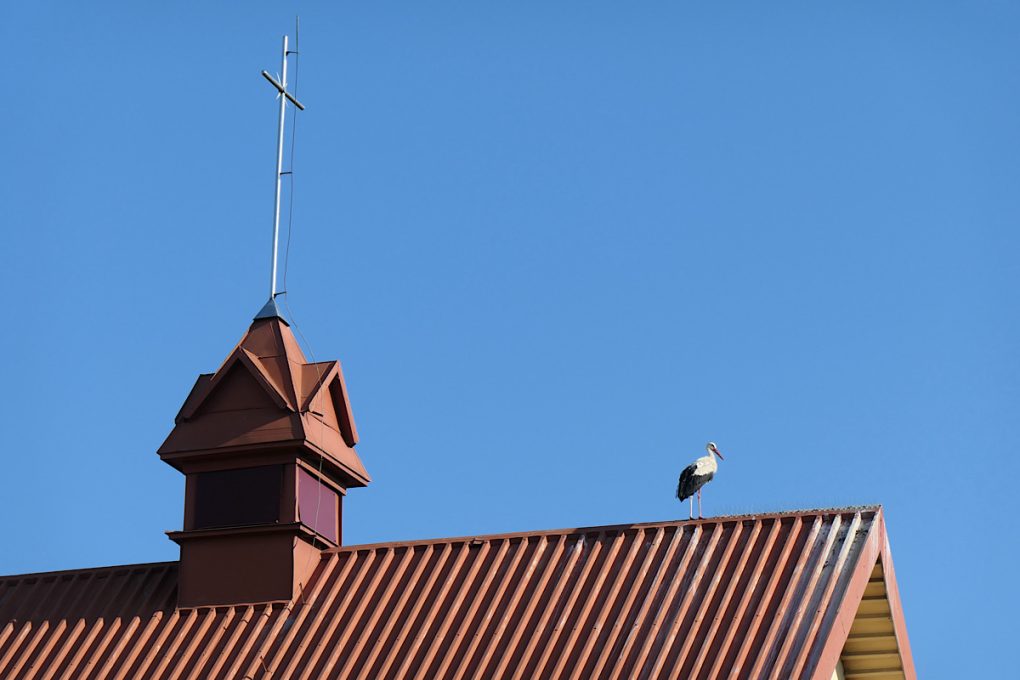
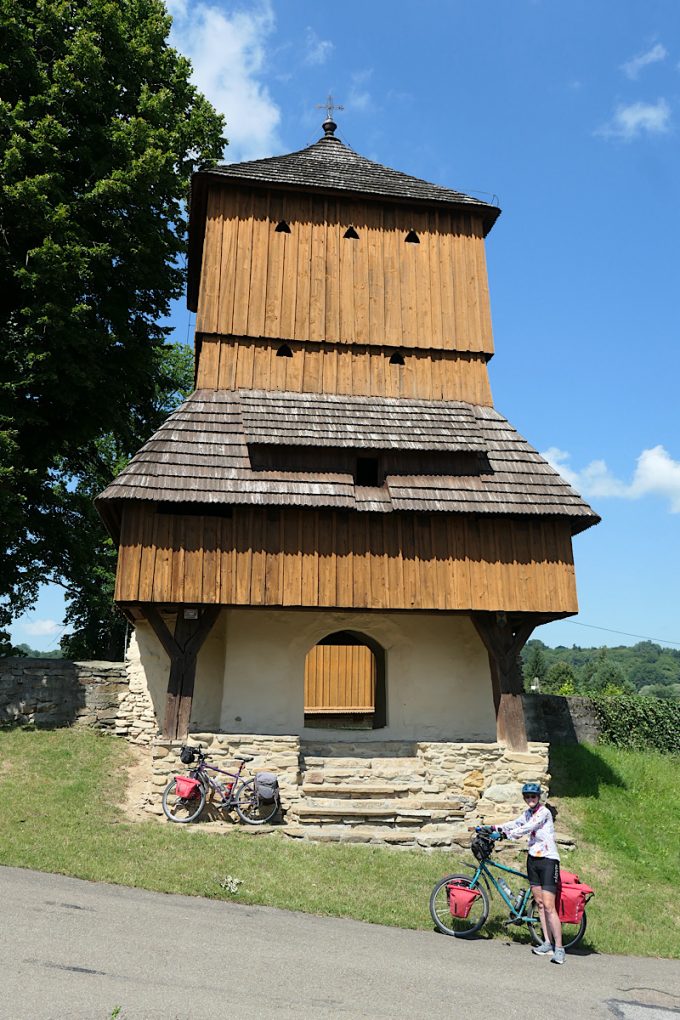
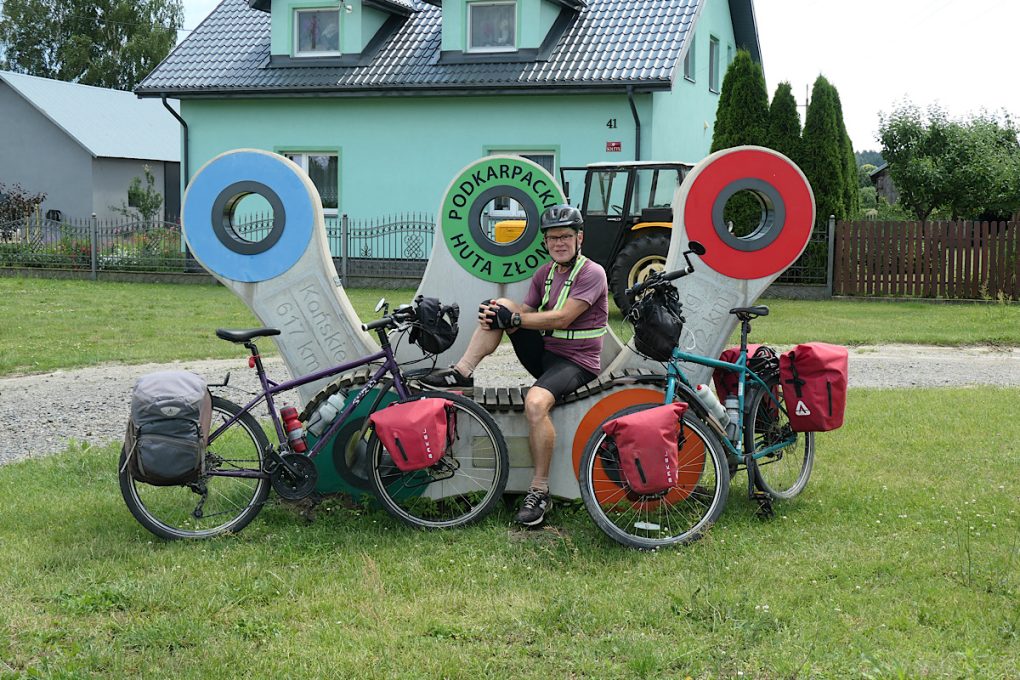

Amazing that so many of the wooden churches have survived centuries of turmoil in Europe.
Many of them were reconstructed after they were partially or completely destroyed. The UNESCO ones are original survivors. We will ride to see another tomorrow.
The churches are wonderful. Poland is a truly remarkable country with such a complicated history. Thanks for the photos and hope to see you soon
You have opened my eyes to the beauty of Poland, and their stunning historical sites.